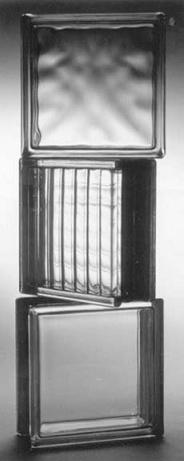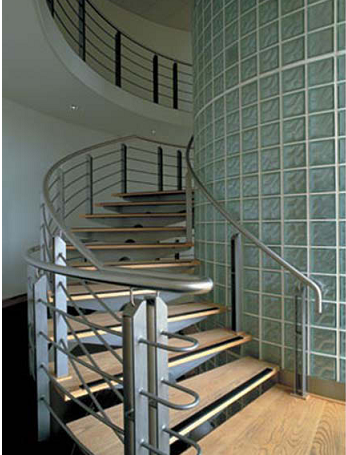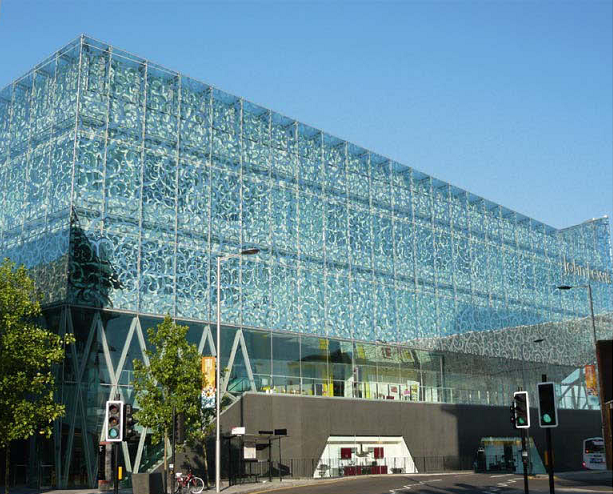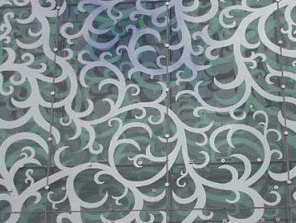
- •Unit 1 the construction-related engineering profession
- •In a paragraph of 70-100 words, and using your own words, as far as possible, summarize what the text tells us about the history of civil engineering.
- •Early christian and byzantine architecture
- •In a paragraph of 70-100 words, and using your own words, as far as possible, summarize what the text tells us about and early Christian and Byzantine architecture.
- •Orders of architecture
- •In a paragraph of 70-100 words, and using your own words, as far as possible, summarize what the text tells us about orders of architecture.
- •Mortars
- •6 Give a literary translation of §§7 – 10.
- •7 Fill in the table using the information from the text:
- •In a paragraph of 70-100 words, and using your own words, as far as possible, summarize what the text tells us about mortars.
- •Unit 5 glass
- •6 Match the information given to the paragraphs in the text:
- •7 Give a literary translation of §§ 9, 10.
- •8 You’ve misheard the information. Make it more exact, putting questions:
- •In a paragraph of 70-100 words, and using your own words, as far as possible, summarize what the text tells us about the staircases.
- •Unit 6 stairs
- •In a paragraph of 70-100 words, and using your own words, as far as possible, summarize what the text tells us about the staircases.
- •Unit 7 doors
- •7 You’ve misheard the information from the previous assignment. Make it more exact, putting questions:
- •In a paragraph of 70-100 words, and using your own words, as far as possible, summarize what the text tells us about the types of doors.
- •Unit 8 green and sustainable buildings
- •2A) Transcribe the following words:
- •Nanotechnology in building construction
- •3Read the text again and answer the questions that follow (1-8):
- •4Match the columns:
- •5A) Find the synonyms in the text and rephrase the sentences using the given expressions:
- •6 Explain the words in bold from the text and make up sentences of your own. Use English-English dictionaries to help you.
- •7 Give the English equivalents to the following and use 5 of them in small situations:
- •8Fill in the gaps with derivatives of the words in capitals:
- •9Group work: choose five questions from the list below, find and presentinformation:
6 Give a literary translation of §§7 – 10.
7 Fill in the table using the information from the text:
-
MORTAR
DESCRIPTION
APPLICATION
Lime Mortar
Non-hydraulic lime mortar
Hydraulic lime mortar
Cement mortar
Lime-cement mortar
What is your impression of the information given in the text? Express your ideas in 3-4 sentences.
In a paragraph of 70-100 words, and using your own words, as far as possible, summarize what the text tells us about mortars.
Find and present additional information on any type of mortars you like.
WORD LIST
|
mortar, n |
строительныйраствор |
|
matrix, n |
цементное тесто (строительного раствора); цементный камень (бетона, раствора) |
|
side joint |
шов стены |
|
plastering |
штукатурные работы; штукатурка |
|
distribute, v |
распределять |
|
adhere, v |
приклеиваться, хвататься |
|
bind, v |
скреплять; затвердевать |
|
nonconductor, n |
непроводник |
|
prevent, v |
предотвращать |
|
moisture, n |
влага; влажность |
|
inertaggregate |
инертный заполнитель |
|
hydrauliclime |
гидравлическая известь |
|
portlandcement |
портландцемент |
|
sharp, adj |
острый |
|
pitsand |
карьерный песок |
|
ground, adj |
измельченный |
|
mortarmill |
растворомешалка |
|
substitute, n |
заменитель |
|
cementmortar |
цементный раствор |
|
cement-limemortar |
цементно-известковый строительный раствор |
|
limemortar |
известковый строительный раствор |
|
quicklime |
негашёная известь |
|
slake, v |
гасить (известь) |
|
heap, n |
груда; отвал (материала) |
|
water-logged, adj |
пропитанный водой; болотистый |
|
stiffen, v |
схватываться (о строительном растворе) |
|
trowel, n |
штукатурная лопатка; кельма; мастерок |
|
gauge, v |
измерять |
|
strength, n |
прочность |
|
cementcontent |
содержание цемента |
“Gently suggest material qualities rather than draw them in a literal manner.”
Matthew Frederick (architect)
Unit 5 glass
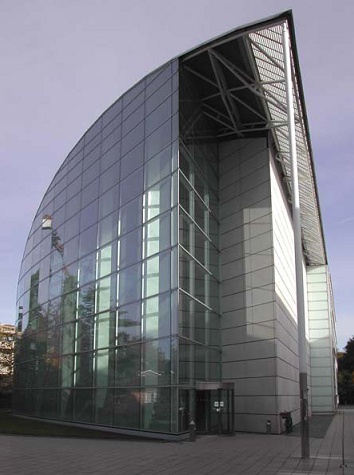
Figure 4.1 Glazed Facade (Faculty of Law, University of Cambridge)
(§1)The term glass refers to materials, usually blends of metallic oxides, predominantly silica, which do not crystallise when cooled from the liquid to the solid state. It is the non-crystalline or amorphous structure of glass that gives rise to its transparency. Glass made from sand, lime and soda ash has been known in Egypt for 5000 years, although it probably originated in Assyria and Phoenicia. The earliest man-made glass was used to glaze stone beads, later to make glass beads (circa 2500 BC), but it was not until about 1500 BC that it was used to make hollow vessels.
(§2)For many centuries glass was worked by drawing the molten material from a furnace. The glass was then rolled out or pressed into appropriate moulds and finally fashioned by cutting and grinding. Around 300 BC the technique of glass blowing evolved in Assyria, and the Romans developed this further by blowing glass into moulds. Medieval glass produced in the Rhineland contained potash from the burning of wood rather than soda ash. Together with an increase in lime content this gave rise to a less durable product which has caused the subsequent deterioration of some church glass from that period.
(§3)The various colours within glass derived from the addition of metallic compounds to the melt. Blue was obtained by the addition of cobalt, whilst copper produced blue or red and iron or chromium produced green. In the fifteenth century white opaque glass was produced by the addition of tin or arsenic, and by the seventeenth century ruby red glass was made by the addition of gold chloride. Clear glass could only be obtained by using antimony or manganese as a decolouriser to remove the green colouration caused by iron impurities within the sand.
(§4)By the late twentieth century, with the advent of fully glazed facades, as illustrated by the Faculty of Law building at the University of Cambridge (Figure 4.1.), the construction industry had become a major consumer of new glass, and a proactive force in the development of new products.
(§5)The glass products fall into principal two types: non-sheet products and sheet products.
(§6)One of the non-sheet product examples is glass blocks. Glass blocks for non-load-bearing walls and partitions are manufactured by casting two half-blocks at 1050 °C, joining them together at 800°C, followed by annealing at 560 °C. The standard blocks (Figure 4.2.a) are 115, 190, 240 and 300 mm square with thicknesses of 80 and 100 mm, although rectangular and circular blocks are also available. Walls may be curved as illustrated in (Figure 4.2.b). The variety of patterns, offering differing degrees of privacy, include clear, frosted, Flemish, reeded, and crystal designs with colours ranging from blue, green and grey to pink and gold. Blocks with solar reflective glass or incorporating white glass fibres offer additional solar control; colour may be added to either the edge coating or the glass itself. Special blocks are also available to form corners and ends also for ventilation.
|
|
|
|
Figure 4.2.a Standard Glass blocks |
Figure 4.2.b Curved Glass Block Walls |
(§7)The variety of sheet products is determined by the new techniques development and cannot be described in one unit. Some types of glass are presented below.
(§8)Sheet products are manufactured in the form of float glass. The standard thicknesses for float glass are 3, 4, 5, 6, 8, 10, 12, 15, 19 and 25 mm to maximum sheet sizes of 3×12 m. Thicker grades are available to smaller sheet sizes.
(§9)Traditional blown and drawn glasses are available commercially both clear and to a wide range of colours. Drawn glass up to 1600×1200 mm is optically clear but varies in thickness from 3 to 5 mm. It is suitable for conservation work where old glass requires replacement. Blown glass contains variable quantities of air bubbles and also has significant variations in thickness giving it an antique appearance. Where laminated glass is required, due to variations in thickness, these traditional glasses can only be bonded to float glass with resin.
(§10) Self-cleaning glass has an invisible hard coating which incorporates two special features. The surface incorporating titanium dioxide is photocatalytic, absorbing ultra-violet light, which with oxygen from the air, breaks down or loosens any organic dirt on the surface. Additionally, the surface is hydrophilic, causing rainwater to spread evenly over the surface, rather than running down in droplets, thus uniformly washing the surface and preventing any unsightly streaks or spots appearing when the surface dries. Self-cleaning glass has a slightly greater mirror effect than ordinary float glass, with a faint blue tint.
|
|
|
Figure 4.3 Screen printed glass facade (John Lewis Department Store, Leicester)
(§11)White or coloured ceramic frit is screen printed onto clear or tinted float glass, which is then toughened and heat soaked, causing the ceramic enamel to fuse permanently into the glass surface. Standard patterns or individual designs may be created, giving the required level of solar transmission and privacy. Screen printed glass, which is colourfast and abrasion-resistant, is usually installed with the printed side as the inner face of conventional glazing (Figure 4.3).
Assignments:
Present phonetic reading of §§ 1 –2.
Explain the words in bold from the text and make up sentences of your own. Use English-English dictionaries to help you.
Suggest the Russian equivalents:
silica, man-made glass, stone beads, appropriate mould, potash, subsequent deterioration, copper, tin, decolouriser, a non-sheet product, rectangular and circular blocks, float glass, antique appearance, invisible hard coating, ultra-violet light, to wash the surface, unsightly streaks or spots, clear or tinted float glass, the required level of solar transmission.
Give the English equivalents:
gечь; прозрачность; придавать форму; изнашивание; стекло; отжиг; потребитель; реставрация; эмаль; пятно; застекление; примесь; марганец; сурьма; полый сосуд; кварц; стеклянный блок; прямоугольный; стойкий к истиранию; содержание извести; придавать форму; рисунок; медь; олово.
Read the text again and answer the questions that follow (1-6):
What is the definition of the word “glass”?
What components is glass made of?
What is the manufacturing process of glass blocks?
How was the medieval glass produced?
What is the role of metallic compounds in glass manufacturing?
What new information have you known about self-cleaning glass?

